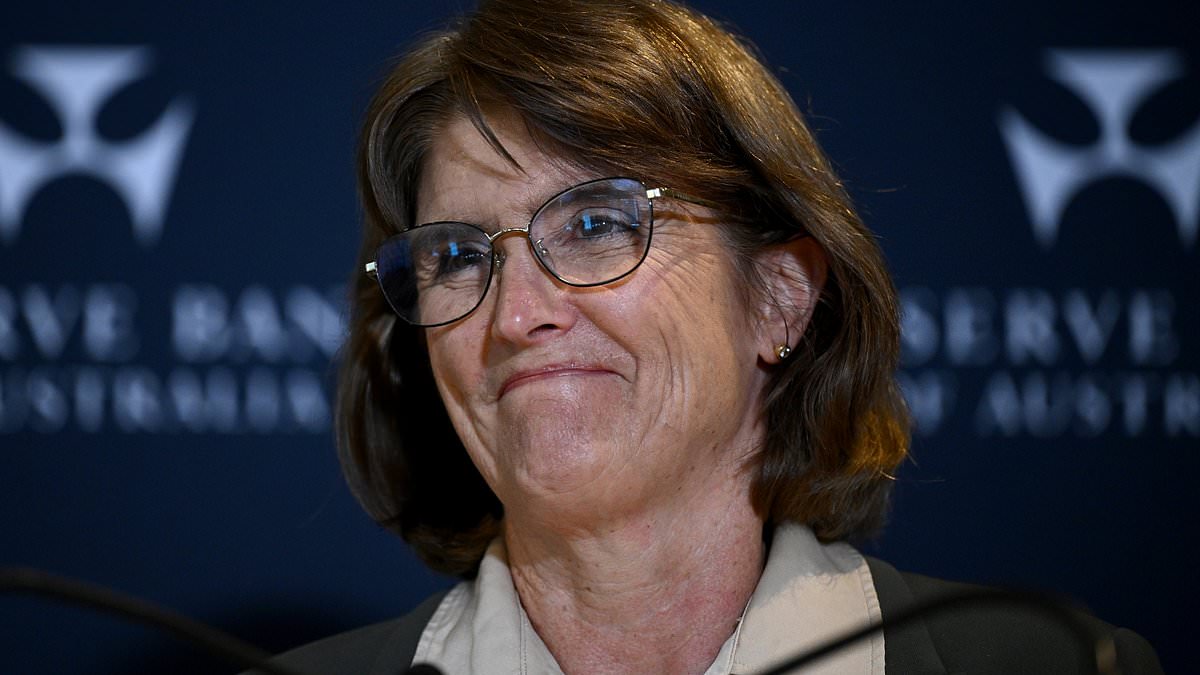n borrowers have had their first official interest rate cut in more than four years.
The Reserve Bank has eased the cash rate by 25 basis points to 4.1 per cent, noting inflation had eased.
‘Some of the upside risks to inflation appear to have eased and there are signs that disinflation might be occurring a little more quickly than earlier expected,’ the board said on Tuesday afternoon.
This marked the first downward move since November 2020 and follows a run of 13 successive rises in 18 months to tackle inflation.
Westpac announced a cut to its variable rates a minute after the RBA announcement, making it the first of the Big Four banks to move, with ANZ, Commonwealth and NAB all following soon after to announce relief would be coming on February 28.
As the banks pass on the RBA cut, a borrower with an average $600,000 mortgage will see their monthly repayments fall by $92 a month or $1,104 a year as a result of the cut.
The average, owner-occupier variable rates offered by banks will fall to 6.07 per cent.
Reserve Bank Governor Michele Bullock, however, declared the fight against inflation was far from over, and cautioned borrowers against expecting more rate cuts in 2025.
‘We cannot declare victory on inflation just yet,’ she told reporters in Sydney.
This was after Treasurer Jim Chalmers declared the cut was ‘very welcome news for millions of ns’ with an election due by May.
‘This is the rate relief ns need and deserve,’ he said.
‘It won’t solve every problem in our economy or in household budgets but it will help.’
Westpac has cut its variable rate by 25 basis points to 6.19 per cent, effective February 28, as the first major bank to move.
ANZ followed suit 23 minutes later, with its quarter of a percentage point cut, giving it the lowest variable rate of 5.84 per cent among the big banks.
The Commonwealth Bank’s 25 basis point easing will see its lowest variable rate fall to 5.9 per cent, while NAB’s 25 basis point cut will see its lowest variable rate fall to 6.19 per cent.
The major banks, however, were already offering three-year variable rates starting with a ‘five’, as the Commonwealth Bank and Westpac expect four cuts in 2025.
NAB sees four cuts this year followed by one more in early 2026.
The RBA move on Tuesday occurred despite underlying inflation, at 3.2 per cent, still being above the Reserve Bank’s 2 to 3 per cent target.
Headline inflation, however, is lower at 2.4 per cent, based on temporary $300 electricity rebates.
Ms Bullock noted the drop in the consumer price index could be temporary.
‘It is not good enough for inflation to be back in the target range temporarily – the board needs to be confident it’s returning to the target range sustainably,’ she said.
The Reserve Bank said it was still mindful of cutting rates too quickly, with updated forecasts released on Tuesday having inflation climbing up to 3.7 per cent by December 2025 after the electricity rebates end.
‘If monetary policy is eased too much too soon, disinflation could stall, and inflation would settle above the midpoint of the target range,’ it said.
‘In removing a little of the policy restrictiveness in its decision today, the board acknowledges that progress has been made but is cautious about the outlook.’
Ms Bullock acknowledged financial markets were expecting another three rate cuts but said it was premature to say that was likely.
‘Our feeling at the moment is that is far too confident that that’s as many rate cuts as we’ll be having,’ she said.
‘I can’t say “one and done” – what I can say is that we’ve done one, we’ve moved a bit of restrictiveness, we are still restrictive, and we are waiting for more evidence that we’re getting inflation sustainably back in the band before we are willing to move again.’
‘s latest 4.1 per cent cash rate is the lowest since early November 2023, but it is still higher than Canada’s equivalent policy rate of 3 per cent, following six cuts there since June.
It is now lower than New Zealand’s 4.25 per cent level, following three cuts since August.
ANZ: Down 25 basis points to 5.84 per cent
COMMONWEALTH BANK: Down 25 basis points to 5.9 per cent
WESTPAC: Down 25 basis points to 6.19 per cent
NAB: Down 25 basis points to 6.19 per cent
